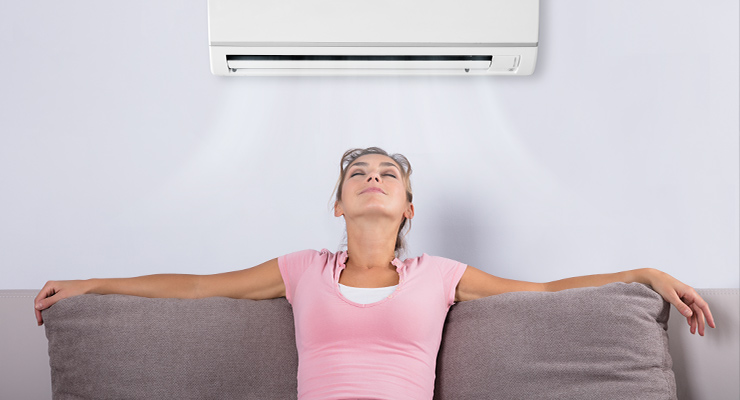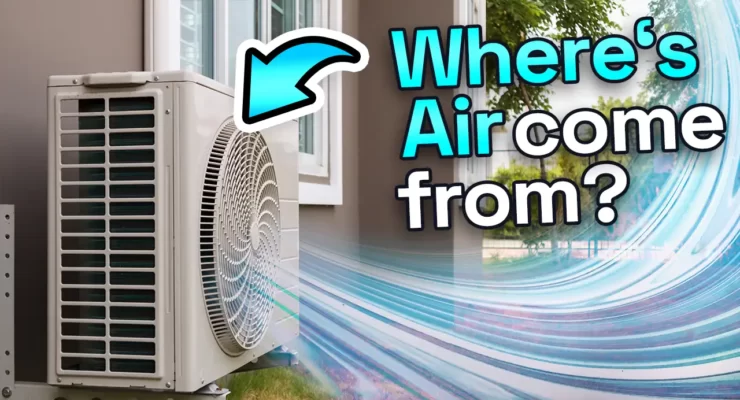Fast read
Understanding how heating and cooling systems operate can be puzzling for many homeowners, despite their appreciation for the benefits. Often confusion arises about where air conditioners draw air from. Contrary to popular belief, they don't pull air in from outside, even though some units are placed outdoors. Instead, air conditioners function by removing heat from inside your home.
This process involves a heat pump, compressor, and refrigerant, which work together to transfer heat outside during summer and inside during winter. The refrigeration cycle, comprising phases of heat absorption, transmission, and dispersion, facilitates this heat exchange. It's a complex yet efficient process that keeps your home comfortable year-round.
Considering that residential air conditioning solutions accounted for about 22% of household electricity usage in 2018-2019, it's crucial to optimise efficiency. Additional ventilation, provided by reputable air conditioning firms, can enhance energy savings and indoor air quality. The type of ventilation needed varies based on factors like home design and health considerations, so consulting with experts is advisable for tailored solutions.
Where does the air come from for my air conditioner?
While homeowners appreciate the benefits of cooling and heating systems, the inner workings of these units often remain a mystery. Many wonder how their air conditioner manages to bring cool air into their homes.
Contrary to popular belief, the air con doesn’t draw air from the outside. Instead, it circulates air from within your home, cooling it down in the process.
This misconception highlights the need for a deeper understanding of HVAC systems among users. By gaining insight into how these systems operate, homeowners can better appreciate their efficiency and effectiveness in maintaining indoor comfort. Clarifying these misconceptions can help users make informed decisions about their HVAC systems and optimise their performance for enhanced comfort and energy efficiency.
Do Air Conditioners Draw in Air from Outside?
Contrary to popular belief, air conditioners do not draw in air from outside. Even though some of your split system air conditioners, often heat pumps, are positioned outside your home, they do not take in outside air. Its primary function is to chill the air in your house by removing undesirable heat rather than pushing cool air inside.
Putting a Stop to the Hot Air
Your air conditioner does more than just cool your home in the summer and warm it in the winter—it uses a special device called a heat pump to do both jobs. In summer, it takes heat from inside your house and moves it outside to keep things cool. In winter, it does the opposite, bringing heat from outside inside to keep you warm.
The key player in this process is the compressor or air conditioner pump. It pulls warm air from your home and sends it through a closed loop filled with a special fluid called refrigerant. This fluid absorbs heat from inside your house during summer releases it outside, and does the opposite in winter.
As the refrigerant moves through this closed loop, it changes between liquid and gas forms, absorbing and releasing heat along the way. This constant cycle of heat exchange is what allows your air conditioner to keep your home comfortable, whether it’s hot or cold outside. Understanding this simple process helps you appreciate the magic behind your air conditioner’s ability to keep you comfy year-round.
Keeping the Temperature Down

The mechanics of this heat exchange, known as the refrigeration cycle, comprise a sequence of changes in temperature, pressure, and condition (liquid/vapour) to remove heat from your home. Four phases exist in this cycle:
- Refrigerants absorb heat from the inside of the home.
- The refrigerant becomes extremely hot.
- The heat from the home is transmitted to the outside via refrigerant, which flows from warmer to colder before being released/transferred to the outside air.
- The refrigerant cools and is dispersed throughout the home by other system components.
Changes…
When the refrigerant comes back to the home, it passes through a small valve into the evaporator. The evaporator is kept at a low pressure, which lets the refrigerant expand quickly. This expansion makes the fluid very cold. A fan blows air over it, and then the cold air is spread throughout your home using ductwork.
As air is blasted, the evaporator (from return ducts) transmits heat into the fluid when the cooled air is transported; this is also part of the heat transference process. After that, the refrigerant is fed back to the condenser, restarting the cycle.
Do You Need More Ventilation?
That is dependent on your requirements. Additional ventilation, provided by a reputable air conditioning firm, may help you save money on electricity costs by decreasing your cooling requirements and improving air quality. The form and purpose of this ventilation will vary according to the age and architecture of your home and your family’s health and comfort requirements. Contact your heating and air conditioning supplier to learn more about these options.
